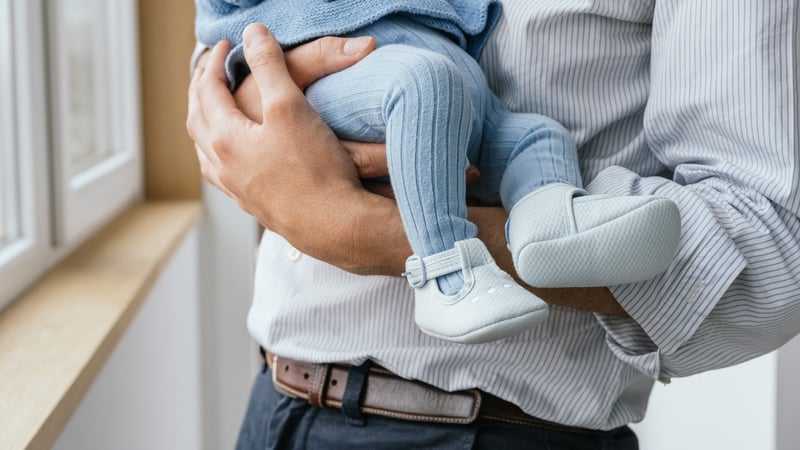Only half of fathers are taking their paternity leave entitlements, according to research published by the Irish Human Rights and Equality Commission and the Economic and Social Research Institute.
The study estimates that 26% of eligible fathers who had children born in 2021 availed of paternity leave, compared to 69% of eligible mothers.
Researchers analysed the years between 2019-2022. The report notes that the Covid-19 pandemic may have had an impact on the usage of child-related leave.
Usage may have been lower, because lockdowns led to an increase in remote working which may have helped facilitate the combining of childcare and employment.
The research found that income-related concerns were often cited as a factor, as well as the flat-rate nature of payments, particularly for those on higher incomes not getting an employer top-up.

Paternity and parent’s leave for fathers in Ireland are both lower than the OECD average, and paternity leave is significantly shorter than maternity leave in Ireland.
Paternity benefit is a payment for a two-week paternity leave, while parent’s benefit is a payment for a longer period of leave (seven weeks, increasing to nine weeks from August 2024) for parents to care for their child during their first two years, available to both parents.
While the vast majority of mothers take the maximum 26 weeks of paid maternity leave available, those receiving a top-up from their employer did take slightly longer than those who received no top-up payment.
Unpaid maternity leave is not directly recorded, but the ESRI estimates that just under one-third of mothers take up unpaid leave.
Read the report in full here
Higher paid fathers, who are more likely to receive employer top-ups, were more likely to avail of Paternity Leave.
Take-up was also higher for those working in larger companies where a replacement might be more readily available.
A survey experiment found high levels of support for ensuring that fathers have 100% of their earnings covered while on leave and for ring-fencing part of child-related leave for fathers only.
Given the significantly longer duration of leave available to women, maternity leave can be expensive for employers.
Despite rising female participation rates in Ireland, a significant gender income gap persists, primarily driven by lower female participation rates and a higher incidence of part-time employment.
This gap often starts after the birth of a child and continues throughout a woman’s lifetime.
The report says large gender gaps in leave allowances have led to a more traditional gender division of labour in the household. It suggests that longer leave for fathers would likely result in a more equal division of childcare and housework duties.
The ESRI also found gaps in data, which limited the research.
It cited the example of same-sex couples where sample sizes were too low to carry out analysis.
IHREC Chief Commissioner Liam Herrick said the fact that women do far more care and care work, paid and unpaid, than men plays a significant part in women’s lower economic status in Ireland.
“To address persistent, structural inequality between women and men, Ireland must find a new relationship between paid employment, care work and gender roles,” he said.
“This report robustly demonstrates the need for effective and gender equitable child related leave schemes, and where policy efforts should be focused to greatest effect”.
Dr Claire Keane of the ESRI, who co-authored the report, said it underscored the importance of child-related leave policies in addressing gender inequalities in the workplace.
“By implementing the recommended policy changes, Ireland can make significant strides towards achieving greater gender equality and supporting both mothers and fathers in balancing work and family responsibilities,” she said.




